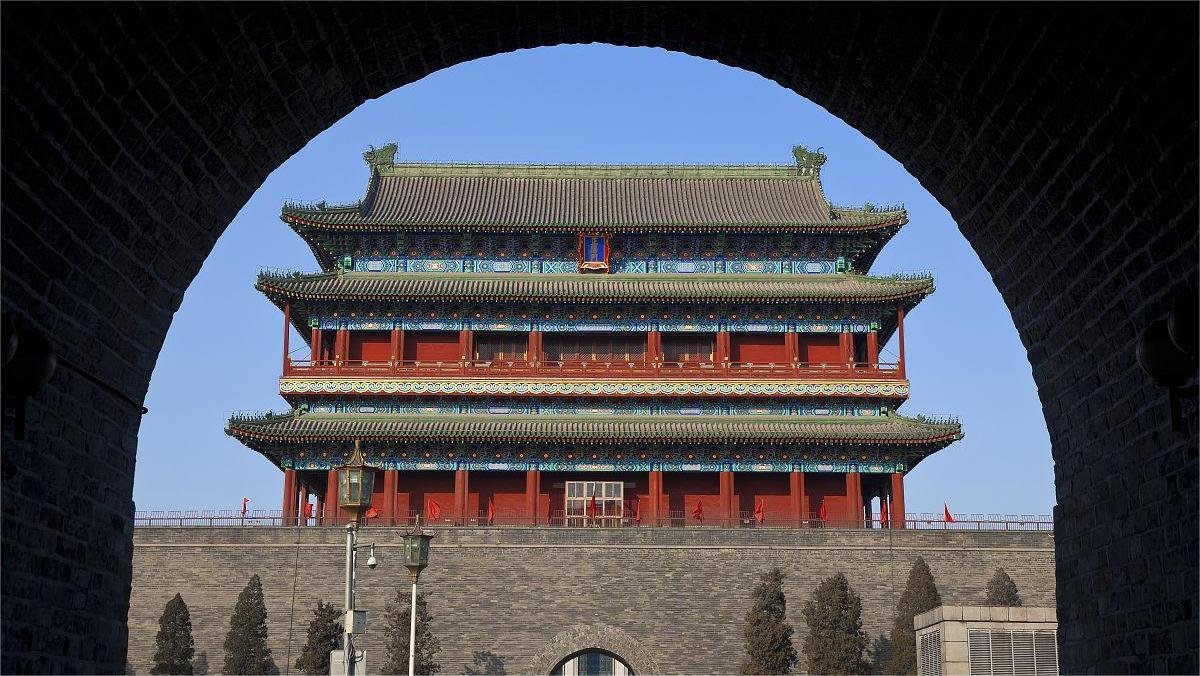The Zhengyang Gate (正阳门), also known as Qianmen Gate, is an iconic landmark located in Qianmen Street, Beijing, China. It holds significant historical and cultural importance and serves as a symbol of the city’s rich heritage. Let’s delve into the details of this magnificent structure.
Historical Significance: The Zhengyang Gate has a history dating back over 500 years. It was originally built during the Ming Dynasty (1368-1644) as one of the nine gates guarding the inner city of Beijing. It was the front gate of the city and played a crucial role in protecting the capital. The gate served as a ceremonial entrance for emperors, high-ranking officials, and foreign dignitaries.
Architectural Style: The Zhengyang Gate exhibits traditional Chinese architectural elements. It features a grand fortress-like structure with fortified walls and towers. The gate consists of a central archway flanked by two imposing watchtowers on each side. The gate’s design is influenced by the imperial architectural style of the Ming Dynasty, characterized by vibrant colors, intricate carvings, and sweeping rooflines.
Three Arched Passageways: The central archway of the Zhengyang Gate is the main entrance and is larger than the two side archways. The three arches are adorned with intricate carvings and decorative motifs, showcasing traditional Chinese artistry. The archways symbolize the importance and grandeur of the gate.
Watchtowers: The two watchtowers standing on either side of the gate are prominent features. These towers were used for military surveillance and defense purposes. They offer an excellent vantage point to observe the surrounding area. Visitors can climb to the top of the towers and enjoy panoramic views of Qianmen Street and the cityscape of Beijing.
Red Walls and Yellow Tiles: The exterior walls of the Zhengyang Gate are painted in a vibrant red color, which is symbolic of good fortune and prosperity in Chinese culture. The roofs are covered with traditional yellow glazed tiles, representing imperial majesty and nobility. The combination of red and yellow creates a visually striking appearance.
Restoration and Preservation: Over the centuries, the Zhengyang Gate has undergone multiple renovations and restorations to maintain its historical integrity. The most recent restoration took place in 2005, prior to the 2008 Beijing Olympics, to preserve and protect this architectural masterpiece. The restoration efforts aimed to maintain the gate’s original design and materials while ensuring its structural stability.
Qianmen Street: The Zhengyang Gate stands at the southern end of Qianmen Street, a famous commercial and cultural pedestrian street in Beijing. Qianmen Street has a long history and has been a bustling commercial center since ancient times. It offers a blend of traditional and modern shops, restaurants, and cultural attractions. The gate serves as the entrance to Qianmen Street, adding to its charm and historical ambiance.


